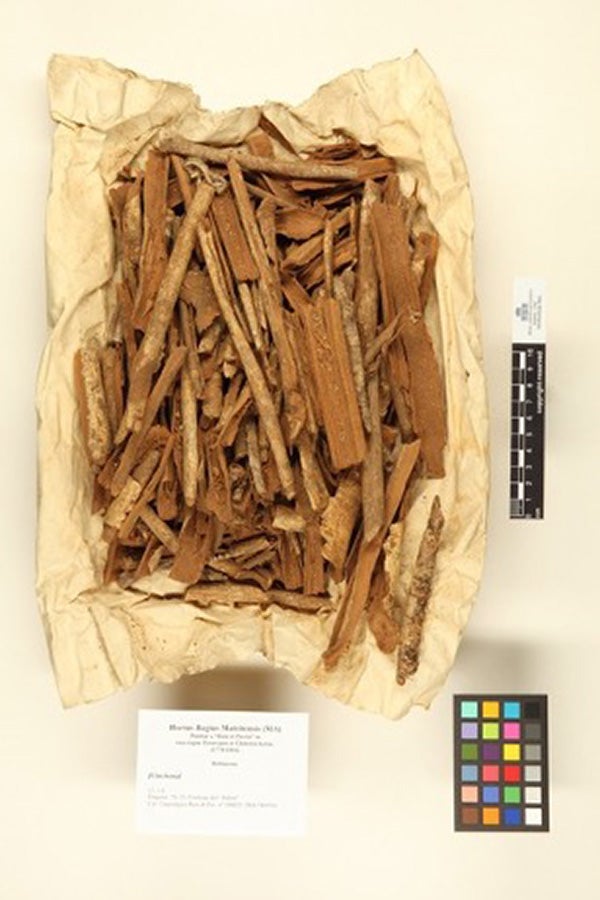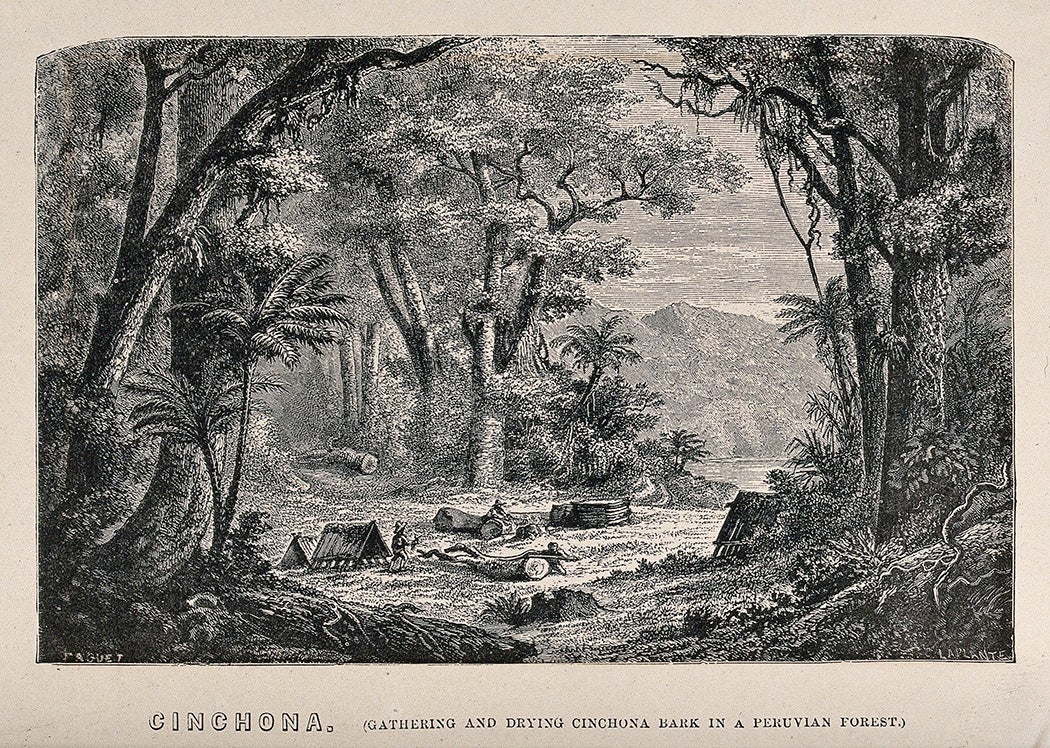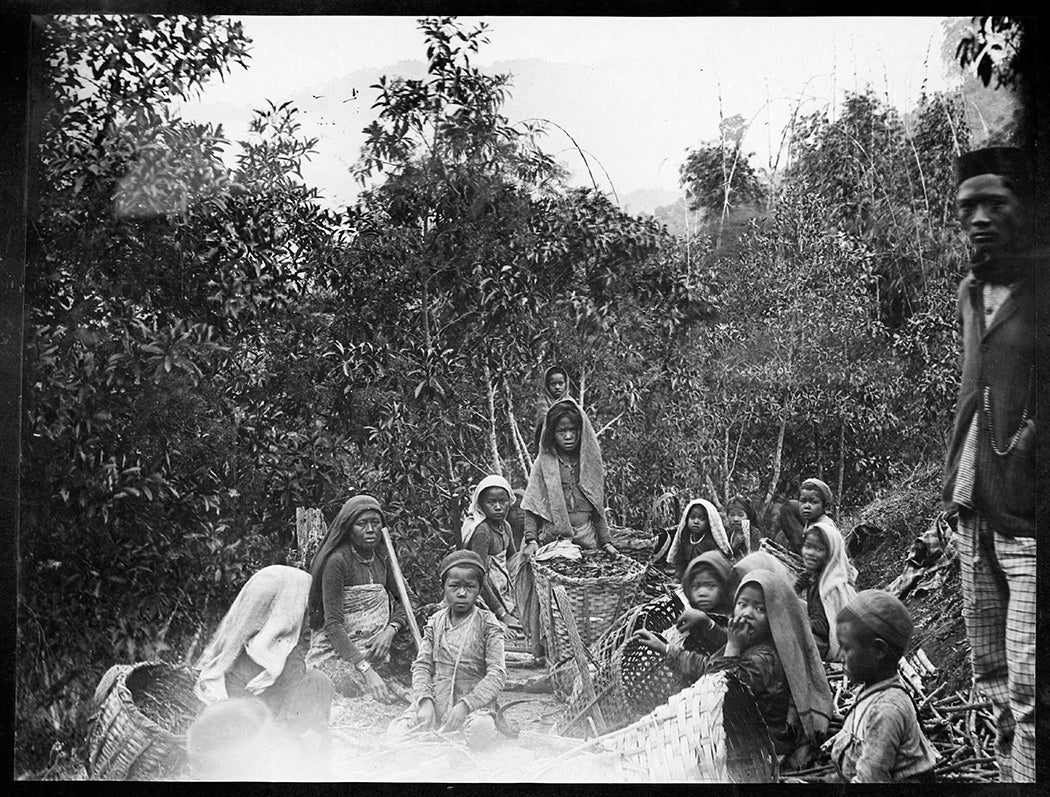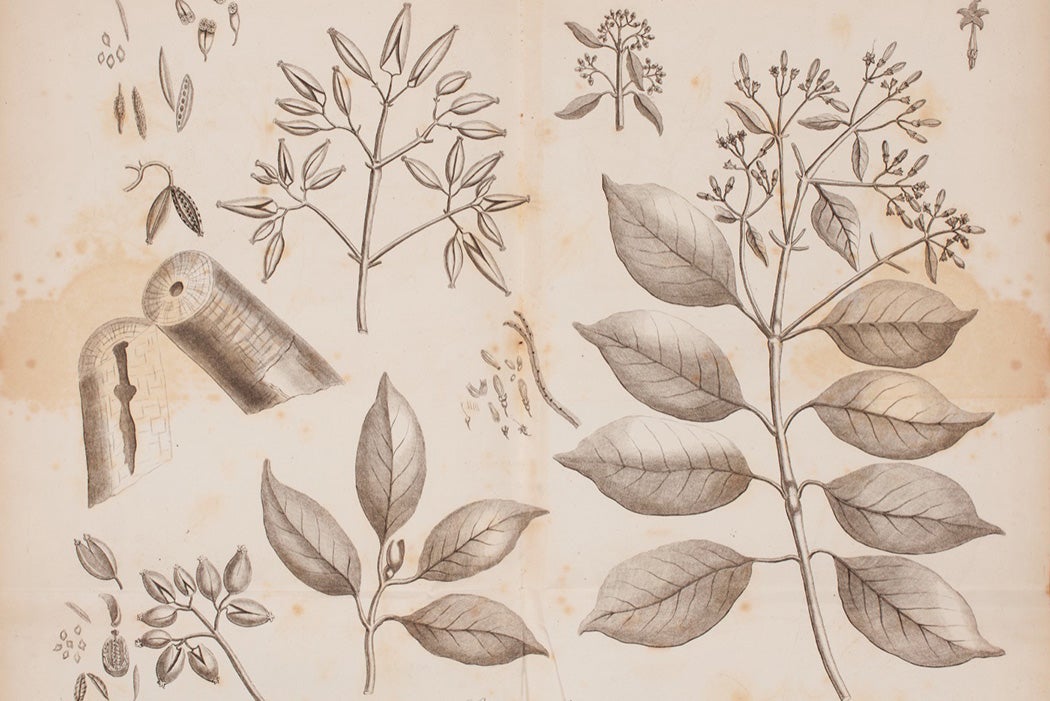In the seventeenth century, quinine, an alkaloid derived from tree bark, was first used to treat malaria. At the start of the COVID-19 pandemic, then-President of the United States Donald Trump touted false information about the potential for the synthetic form of quinine to treat the infection. In 2022, researchers conducted a study on whether quinine, among other alkaloids, could cure breast cancer. For most Westerners in 2023, however, quinine isn’t encountered in medical form but in a beverage: it can most easily be identified by its bitter flavor, characteristic of tonic water.
Quinine is derived from the bark of cinchona, a tree native to the tropical Andean region of South America. In many colonial histories of cinchona, its story begins in the late seventeenth century with the introduction of quinine to Europe. But long before European colonizers arrived in present-day South America, Indigenous peoples in the Andes were using cinchona bark medicinally.
Traditions of healing and healers in the Andes are preserved in artifacts from the Moche civilization, which thrived around 100–800 CE. As historian Matthew James Crawford explains, Andean medicine contained a rich understanding of “the physiological symptoms of disease and the physical properties of the plants or other natural substances used to treat disease.” Elsewhere, Crawford notes that while conducting research in the region where colonists first learned of cinchona bark, Peruvian anthropologist Lupe Camino found that that those areas were the sites of “intense activity among Andean healers for centuries before Spanish colonisation.”

When Spanish colonizers arrived in what is now Peru, they noted that Indigenous peoples referred to the tree as “the tree of fevers,” writes Crawford. In a 1931 booklet created for the “Cinchona Tercentenary Celebration and Exhibition,” now held in the Wellcome Historical Medical Museum in London, an unnamed author wrote that “the therapeutic properties of Cinchona Bark are believed to have been well known to the native Indians or Peru, who confided their knowledge to the Jesuit Missionaries when they established missions in the country after the conquest by Pizarro in 1527.” European settlers brought numerous diseases and pathogens with them as they colonized the Americas, and Crawford speculates that Andean healers were likely the first to attempt to treat new diseases, like malaria, with cinchona bark.
By the seventeenth century, worldwide demand for the bark increased as European traders learned of its anti-fever properties. Confusion over which plant was the correct plant (many plants were confused with cinchona and vice versa), as well as a lack of familiarity with the region, meant that Spanish colonizers relied on the knowledge and labor of Indigenous people. As Crawford writes, cinchona was not cultivated in seventeenth-century South America. Thus, “cascarilleros—as bark collectors were known in the Spanish language—had to travel deeper and deeper into the forests in search of cinchona trees to supply the growing demand for bark.”
According to tradition, the tree bark cured the wife of the Spanish Viceroy of Peru, Countess of Chinchón, from malaria. As the story goes, she brought the bark with her to Spain. To memorialize this now-disproved fable, Carl Linnaeus taxonomized the tree as “cinchona” in the eighteenth century, misspelling the hero’s name in the process. The Linnaean term highlights a fable of the moment when the bark was extirpated from the Americas.

Writing in 1945, botany professor William Campbell Steere noted that the last few decades of the eighteenth century witnessed “the complete extirpation of trees in order to remove the root-bark caused the virtual disappearance of Cinchona species over wide areas.” Colonial powers removed and transported cinchona to plantations in Asia, where the tree was cultivated by enslaved people alongside other export crops. The plantations became so important to colonial powers that when Japan seized Java (the location of a major cinchona plantation) during WWII, US botanists traveled to the Andes to root out even more. Steere argued that
the quinine shortage became so serious that the British and Dutch governments could no longer ignore it, since they were able to maintain their far-flung colonial empires throughout the malaria-infested tropics only with an abundant supply of quinine.

Anthropologist Lucille Brockway elaborates in her discussion of the British Royal Botanical Gardens in the extraction and commodification of cinchona,
in the case[s] of both cinchona and rubber, a plant indigenous to Latin America was surreptitiously transferred—in plain English, smuggled—to Asia for development by Europeans in their colonial possessions. The newly independent Latin American states, Brazil, Mexico, Colombia, Peru, Ecuador, and Bolivia, each lost a native industry…but Asia acquired them only in a geographic sense; the real benefits went to Europe.
Today, cinchona trees are at risk of extinction in Peru, and the trees that still exist—in one area, only twenty-nine where there were once 25,000—may contain less quinine than their predecessors due to human interference. And though quinine has been synthetically derived, it’s still not as easily obtained as natural extraction from cinchona bark. Cinchona tells a story about the value placed on parts of plants and how that value can be extracted and distorted. The plant can now be found all over the world and is even considered invasive in the Galapagos and Hawai’i. As humans continue to turn to plants for the answers to our ailments, cinchona bark offers one more example of how Indigenous knowledge has been co-opted by colonizers to sustain empires at the expense of both plants and people. The Plant Humanities Initiative at Dumbarton Oaks seeks to place the stories of plants within the context of human life.








